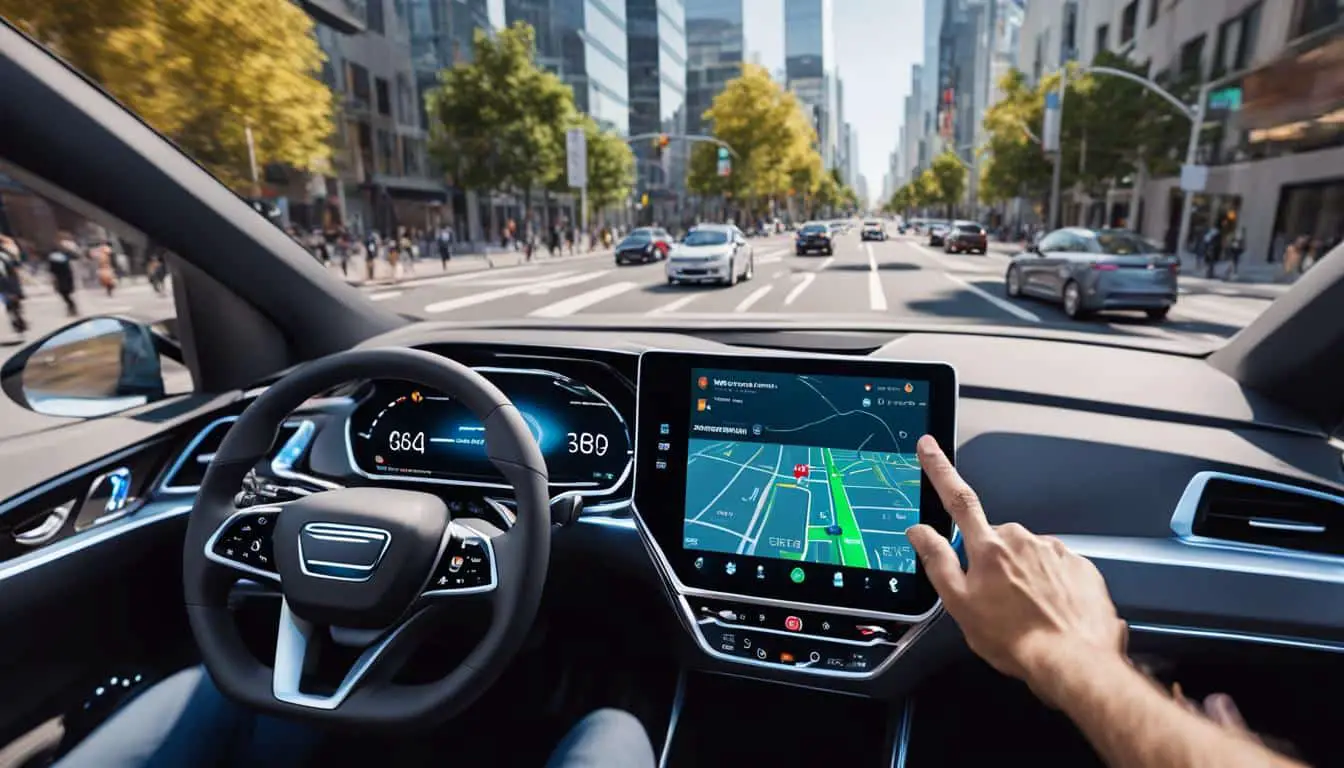
Telematics: Enhancing Self-Driving Car Technology
With the rapid advancement of technology, self-driving cars are becoming a reality. These autonomous vehicles are set to revolutionize the way we travel, offering a safer and more efficient means of transportation. One crucial component in the development and implementation of self-driving car technology is telematics.
Telematics refers to the integration of telecommunications and informatics technologies, enabling the transmission and processing of data over long distances. In the context of self-driving cars, telematics plays a vital role in enhancing their capabilities and ensuring their safe operation.
Autonomous vehicles operate on a scale of automation levels, ranging from Level 0, where human intervention is required in all aspects of driving, to Level 5, where the vehicle can operate independently in any situation. Telematics technology is instrumental in achieving these automation levels by enabling real-time data transmission, communication between vehicles and infrastructure, and enhanced safety measures.
Through telematics, self-driving cars can gather and analyze real-time data from various sensors and sources, such as GPS, cameras, and radar. This data allows the vehicle’s AI and machine learning algorithms to make informed decisions and navigate the road safely and efficiently.
Furthermore, telematics enables communication between self-driving cars and the surrounding infrastructure, including traffic lights, road signs, and other vehicles. This communication network allows for improved coordination, enabling self-driving cars to adapt to changing road conditions, avoid congestion, and optimize their routes.
Overall, telematics in self-driving car technology opens up a world of possibilities, enhancing the safety, efficiency, and overall performance of autonomous vehicles. As technology continues to evolve, we can expect further advancements in telematics, taking us closer to a future where self-driving cars are the norm.
Key Takeaways:
- Telematics plays a crucial role in enhancing self-driving car technology.
- Autonomous vehicles operate on a scale of automation levels, ranging from Level 0 to Level 5.
- Telematics enables real-time data transmission, communication between vehicles and infrastructure, and enhanced safety measures.
- Through telematics, self-driving cars can gather and analyze real-time data to make informed driving decisions.
- Telematics allows for communication between self-driving cars and the surrounding infrastructure, optimizing routes and improving coordination.
The Advantages of Self-Driving Cars
Self-driving cars offer several advantages over human-driven cars. One of the most significant benefits is the potential for increased safety on the roads. Autonomous vehicles have the ability to sense their surroundings and make decisions based on advanced AI and machine learning algorithms, reducing the risk of human error. This enhanced safety feature has the potential to save countless lives and prevent accidents caused by distracted driving or impaired judgment.
Furthermore, self-driving cars can greatly improve traffic management and reduce congestion. With the ability to communicate with each other and adjust their routes in real-time, these vehicles can optimize traffic flow and minimize delays. This not only improves efficiency but also reduces fuel consumption and lowers carbon emissions, contributing to a more sustainable transportation system.
Cost reduction is another significant advantage of self-driving cars. By utilizing autonomous vehicles, transportation costs can be minimized, especially in terms of fuel consumption and maintenance. Self-driving cars are designed to operate with optimal fuel efficiency, reducing the overall cost of transportation. Additionally, the potential to use self-driving cars as ride-sharing or autonomous taxi services can further reduce individual transportation expenses.
Self-driving cars also have the potential to provide safe and convenient transportation for individuals with disabilities. With autonomous vehicles, people with mobility limitations can gain access to reliable transportation options, enhancing their independence and quality of life.
Overall, the advantages of self-driving cars encompass increased safety, improved traffic management, cost reduction, and enhanced accessibility for individuals with disabilities. As this technology continues to advance, it has the potential to revolutionize the way we travel and reshape the future of transportation.
The Advantages of Self-Driving Cars at a Glance:
| Advantages | Description |
|---|---|
| Increased Safety | Autonomous vehicles minimize the risk of human error, improving road safety. |
| Traffic Management | Self-driving cars optimize traffic flow, reducing congestion and improving efficiency. |
| Cost Reduction | Autonomous vehicles are fuel-efficient and require less maintenance, resulting in cost savings. |
| Accessibility | Self-driving cars provide safe transportation options for individuals with disabilities. |
The Role of Telematics in Self-Driving Cars
Telematics technology plays a crucial role in the development and implementation of self-driving cars. With the introduction of 5G technology, the transmission and processing of data between vehicles and infrastructure is set to increase, enabling real-time communication and enhanced safety measures.
Telematics allows for vehicle-to-vehicle and vehicle-to-infrastructure communication, providing information about traffic congestion, road conditions, and potential hazards. This technology enables self-driving cars to make informed decisions, ensuring the safety of both passengers and pedestrians.
Real-time communication facilitated by telematics technology enhances the overall safety of self-driving cars. By receiving instant updates on road conditions, traffic congestion, and potential hazards, autonomous vehicles can adjust their speed, route, and driving behavior accordingly. This ensures that self-driving cars can navigate the roads in the safest and most efficient manner possible.
Moreover, telematics enables self-driving cars to communicate with other vehicles on the road and with the surrounding infrastructure. This real-time communication allows for cooperative driving, where multiple autonomous vehicles can coordinate their movements and share information to avoid accidents and traffic jams.
With the help of telematics, self-driving cars can also receive alerts and notifications about roadwork, accidents, and emergency vehicles, allowing for timely and appropriate responses. This ensures that self-driving cars can adapt to changing road conditions and prioritize safety at all times.
Telematics technology, combined with the advancements in self-driving car technology, is paving the way for a future with safer and more efficient transportation. By harnessing real-time communication and data analysis, self-driving cars can navigate the roads with precision and react to potential dangers in a proactive manner.
| Benefits of Telematics in Self-Driving Cars | |
|---|---|
| Enhanced safety | Real-time communication enables proactive responses to potential hazards, improving overall road safety. |
| Efficient navigation | Telematics allows self-driving cars to receive real-time updates on traffic conditions, enabling efficient route planning and reducing congestion. |
| Cooperative driving | Telematics facilitates communication between self-driving cars, enabling cooperative driving and synchronized movement. |
| Timely alerts | Self-driving cars can receive instant notifications about roadwork, accidents, and emergency vehicles, ensuring timely responses. |
In conclusion, telematics technology is a vital component in the development and deployment of self-driving cars. With the ability to facilitate real-time communication, telematics enhances the safety and efficiency of autonomous vehicles, allowing them to make informed decisions and navigate the roads with precision. As technology continues to advance, telematics will play an increasingly important role in the future of self-driving cars and transportation.
Challenges of Self-Driving Cars
While self-driving cars hold immense potential, they also present a range of challenges that need to be overcome. These challenges span various aspects, including hardware, AI and machine learning, regulatory compliance, and ethical considerations.
Hardware Challenges
The hardware requirements for self-driving cars pose a significant challenge. To enable autonomy, these vehicles need advanced sensors and intricate designs capable of withstanding diverse environments. The installation of sensors, such as lidar and radar, is crucial for accurate perception and navigation. Additionally, the vehicles must be designed to ensure robustness and durability while operating in real-world scenarios.
AI and Machine Learning
AI and machine learning underpin the very essence of self-driving car technology. However, ensuring the safety and reliability of these algorithms is a complex challenge. Extensive testing, training, and validation methods need to be developed to address potential issues and guarantee the highest level of safety. The ability of AI systems to adapt and learn in complex, unpredictable situations is a key concern that must be thoroughly addressed.
Regulatory Challenges
The regulatory landscape surrounding self-driving cars is still evolving. Governments and regulatory bodies globally are grappling with the development of comprehensive frameworks to address liability, accountability, and safety concerns. Establishing standards and regulations that ensure the safe integration of self-driving cars into existing transportation systems is crucial for widespread adoption.
Ethical Challenges
Self-driving cars often face difficult ethical dilemmas. In certain situations, the AI system may need to make split-second decisions that prioritize either passenger safety or the safety of pedestrians and other road users. Determining how these decisions should be made and who should be held accountable for the consequences raises challenging ethical questions that require careful consideration and public discourse.
Self-driving cars present a complex array of challenges that need to be addressed. From hardware and AI algorithms to regulatory and ethical frameworks, overcoming these challenges is essential to unlock the full potential of autonomous vehicles. By tackling these issues head-on, we can build a future where self-driving cars transform transportation, enhance safety, and improve our quality of life.
Let’s explore these challenges further with a comprehensive table:
| Challenges | Description |
|---|---|
| Hardware Requirements | The installation of sensors and designing vehicles capable of withstanding various environments. |
| AI and Machine Learning | Ensuring the safety and reliability of AI algorithms through robust testing, training, and validation methods. |
| Regulatory Compliance | Developing comprehensive frameworks and standards to address liability, accountability, and safety concerns. |
| Ethical Considerations | Addressing the ethical challenges arising from difficult decisions that prioritize passenger or pedestrian safety. |

The Future of Self-Driving Cars
The future of self-driving cars holds immense potential for transforming transportation as we know it. However, several factors need to be considered as we navigate this promising but uncertain path.
Job Loss: One significant concern raised by the advent of self-driving cars is the potential impact on employment in the transportation industry. As vehicles become increasingly automated, there is a possibility of job displacement for individuals involved in driving-related occupations.
Safety Regulation: Ensuring the safe operation of self-driving cars is of utmost importance. Robust safety regulations and standards must be put in place to address the unique challenges presented by autonomous vehicles. This includes stringent testing, validation, and certification processes to guarantee passenger and pedestrian safety.
Legal Concerns: The widespread adoption of self-driving technology raises various legal concerns. Liability issues and accountability frameworks need to be established to determine who is responsible in the event of accidents or failures involving autonomous vehicles. Comprehensive legislation is crucial to ensure a clear legal framework for autonomous driving.
Privacy: With the increasing reliance on data collection and storage in self-driving cars, privacy concerns arise. The collection and use of personal information need to be closely regulated to prevent unauthorized access or misuse of sensitive data. Stricter privacy measures must be implemented to protect user information and maintain public trust.
Thorough analysis, stakeholder involvement, and collaboration between government bodies, industry experts, and technology developers are essential to overcome these challenges. By addressing job loss, safety regulation, legal concerns, and privacy issues, we can fully embrace the potential of self-driving cars and unlock a future of safer and more efficient transportation.

Conclusion
The integration of telematics in self-driving car technology is revolutionizing the future of transportation. Telematics enables real-time data transmission, facilitates communication between vehicles and infrastructure, and enhances safety measures. Despite the challenges posed by hardware requirements, AI and machine learning, regulatory frameworks, and ethical dilemmas, the potential benefits of self-driving cars, including improved safety, reduced congestion, and cost savings, make them a promising advancement in the automotive industry.
With continued advancements in technology and collaborative efforts among stakeholders, self-driving cars have the potential to fundamentally transform the way we travel and significantly enhance safety on our roads. The seamless exchange of information enabled by telematics allows vehicles to navigate more efficiently and make informed decisions based on real-time data. This enhanced level of automation not only improves road safety but also enhances the overall transportation experience.
The future of self-driving cars holds great promise, but it is crucial to address the challenges and concerns associated with this technology. Developing robust hardware systems, refining AI and machine learning algorithms, establishing effective regulatory frameworks, and addressing ethical dilemmas are essential steps to ensure the safe and responsible integration of self-driving cars into our daily lives.
As we embrace the future of transportation, it is vital to recognize the immense potential of self-driving cars and the role that telematics plays in their development. By leveraging the power of real-time data transmission and enhancing safety measures, self-driving cars powered by telematics offer a transformative vision for the future of transportation that prioritizes efficiency, convenience, and, above all, safety.
FAQ
What is telematics and how does it relate to self-driving car technology?
Telematics technology plays a crucial role in the development and implementation of self-driving cars. It allows for real-time data transmission, communication between vehicles and infrastructure, and improved safety measures.
What are the advantages of self-driving cars over human-driven cars?
Self-driving cars offer increased safety, better traffic management, reduced congestion, cost reduction in transportation, and improved accessibility for people with disabilities. They also help reduce driver fatigue during long journeys.
How does telematics technology contribute to the safety of self-driving cars?
Telematics enables vehicle-to-vehicle and vehicle-to-infrastructure communication, providing information about traffic congestion, road conditions, and potential hazards. This technology allows self-driving cars to make informed decisions, ensuring the safety of passengers and pedestrians.
What are the main challenges of self-driving cars?
The main challenges include hardware requirements, such as sensors and vehicle design, AI and machine learning algorithms, regulatory frameworks, and ethical dilemmas regarding decision-making prioritization.
What are the future considerations for self-driving cars?
Future considerations include potential job loss in the transportation industry, safety regulations, liability issues, legal concerns, and privacy issues related to data collection and storage.
How does telematics enhance the future of transportation?
Telematics technology revolutionizes transportation by enabling real-time data transmission, communication, and enhanced safety measures. It has the potential to improve safety, reduce congestion, and optimize efficiency in the automotive industry.
